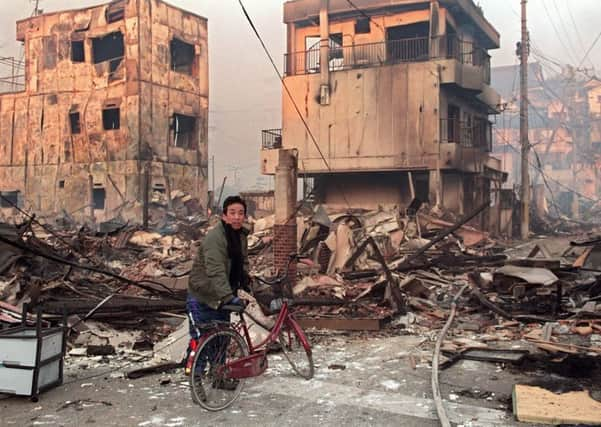Duncan Smith: Kobe shows word ‘disaster’ should never be applied to sport


There was sadness at leaving Tokyo on Monday after an amazing week there and a slight reservation that the truly magnificent bullet train was hurtling us south and west into slightly more backwater territory.
Not a bit of it. Kobe is an absolute delight. Less frenzied than the megalopolis capital, naturally, but still full of energy in its own way. And very walkable. I haven’t got lost once since arrival, whereas back in Tokyo that would happen at least half a dozen times a day even with the assistance of Google maps.
Advertisement
Hide AdAdvertisement
Hide AdI’m based in the Sannomiya district, which is the hub of the city’s colourful and youthfully exuberant nightlife and Scottish fans who do make it here for the Samoa game should find the bar scene a lot more conducive than Tokyo. I still haven’t found a Wetherspoons though!
Behind the verve and vitality Kobe has a tragic, very recent past. At 5.46am on 17 January 1995 the Great Hanshin Earthquake struck. More than 6,000 people were killed, around 4,600 in the city of Kobe, more than 60,000 injured and around 300,000 buildings lost. It was Japan’s second biggest quake since 1923.
I was in first year at university then and was a bit ashamed that I only had the vaguest, haziest memory of this appalling event occurring.
To put that right I headed yesterday morning to the Port of Kobe Earthquake Memorial Park. Outside the museum a pier that was wrecked is preserved as it was after the quake had unleashed its monstrous power.
Inside, there is spine-chilling video presentation in English of Kobe being torn asunder by this ferocious force of nature and a fascinating insight into the rescue then rebuild effort, with enhanced earthquake-proofing technology on new and remaining buildings, which, extraordinarily, has led to a gleaming city you would never imagine was in ruins less than 25 years ago.
As I returned to the city centre on the subway I took a stroll through Kobe’s East Park back to the hotel and spotted an encased burning flame. Sure enough it was another memorial to January 1995. Beside it was a plaque inscribed with the following words:
This earthquake took many things,
Lives, jobs, communities, our cityscape, our memories,
These things appear safe, permanent,
Even moments before, we cannot know.
This earthquake left many things behind,
Kindness, compassion, human bonds, friendship,
This flame links the lives which were taken away,
With our thoughts, the survivors.
Many adjectives have been used to describe what happened to the Scotland rugby team on Sunday, I know I have almost used up that part of the thesaurus in the days since. Disaster should never be one of them.
•Our Japan 2019 Rugby World Cup coverage is brought to you in association with Castle Water www.castlewater.co.uk and on Twitter @CastleWaterLtd
Follow Duncan Smith in Japan on Twitter @Duncan_Smith